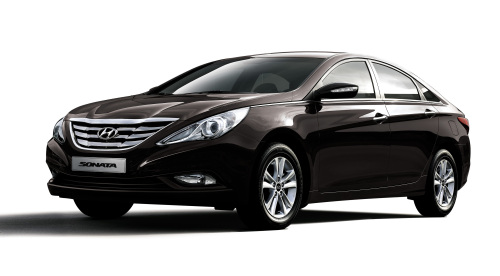Hyundai Motor Co.’s net annual profits broke the 5 trillion won mark for the first time in 2010 buoyed by improving performances from overseas operations, the company announced Thursday.
The company’s net profits for 2010 jumped 77.8 percent from the previous year to come in at 5.27 trillion won ($4.73 billion), while operating profits came in at 3.23 trillion won, up 44.4 percent from 2009.
The company attributed the increase in operating profits to a fall in marketing costs brought on by improving brand image and recognition.
 |
Hyundai Sonata |
With the changes, the company’s operating profit rate increased to 8.8 percent from the 7 percent recorded in the previous year.
Hyundai’s sales increased by 15.4 percent over the same period to come in at 36.77 trillion won as sales increased and improvements in product lineup offset the detrimental effects of won’s strength, the company said.
In terms of sales by number of vehicles sold, the company’s global sales improved 7.4 percent from 2009 to come in at about 1.73 million units.
Hyundai’s sales expansion was fueled by overseas sales that rose 17.8 percent from a year earlier, while domestic sales declined by 6.2 percent.
Much of the rise seen abroad was driven by sales rising to record highs in some of the world’s largest auto markets.
Last year, Hyundai saw sales in China break the 500,000 unit mark, while its India sales rose above 600,000 units for the first time aided by models developed strategically for the markets.
The carmaker’s sales in the U.S. also came in at over 500,000 units last year aided by the latest version of the midsized sedan Sonata, the company said.
In addition to major markets, the company also saw significant improvements in sales in the Middle East last year.
According to industry data, Hyundai’s sales in the region jumped 47 percent from a year earlier to come in at 261,000 units, rising above the 200,000 unit mark in the region for the first time.
The growth rate recorded last year is more than double that of those recorded in previous years when figures hovered between 18 and 19 percent.
By Choi He-suk (
cheesuk@heraldcorp.com)








